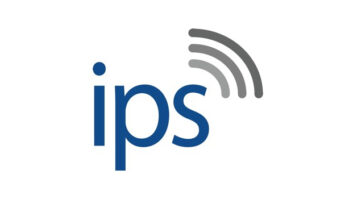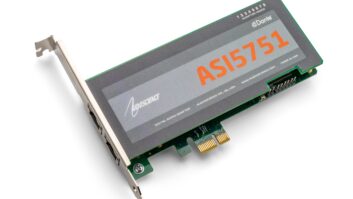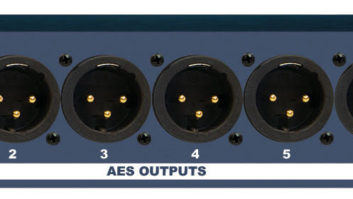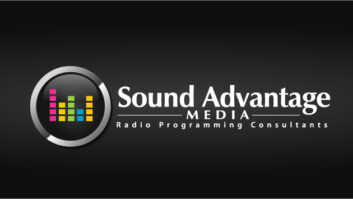
Every so often Radio World asks me to review audio editing software that is designed or suitable for the radio production or creative director. I must admit that it’s exciting to tinker with new plug-ins and see how well the program performs in a real-world environment. You may remember that I shared my thoughts earlier this year on Sound Forge for Mac. Now, it’s time to look at the latest edition of Sound Forge for PC — Sound Forge Pro 11.
In Sound Forge Pro 11, users will find a new Record Options window to make life just a wee bit easier. Simple and sweet would define the layout.
NEW FEATURES
If users wish to start the recording manually, they can go right ahead. The program defaults to the manual mode. If users wish for the program to automatically start recording when it hears audio, simply set the audio threshold. Perhaps a daily satellite feed needs recording. Sound Forge Pro can handle that, too. It’s extremely easy to set what time for the program to start and stop recording and it will handle multiple entries. It can even be set it to record daily or weekly at the same time. This took about two seconds to figure out and it worked like a champ.
Another feature that I liked was the DC offset button. At times, a sound card will add DC current to a recording and you may notice a line on your waveform. Sound Forge Pro 11 can automatically correct this problem. This will save time and much energy trying to fix the problem in post.
Loudness meters are an interesting addition to Sound Forge Pro 11. There are a total of six meters to view: Momentary Loudness, Short Term Loudness, Integrated Loudness, Loudness Range and True Peaks for Left and Right Channels. There are also boxes that display the numeric value of each loudness meter.
While this is an interesting tool to study the audio with which you are working, I’m not sure how useful it is in day-to-day production duties. Sound Forge boasts that it can be used to help comply with the CALM Act; for our purposes in radio production, I don’t think it benefits us. It may be if you are in video production. For an audio forensics junkie such as myself, it is fascinating to watch.
PLUG ME IN
Major improvements have been made in not only the plug-ins themselves but the plug-in chain, as well.
Plug-in chains can play a big role when creating or mastering a piece. They are key to shaping the sound of your creation. The chains allow the ability to rearrange the order of effects that are put on a track or can add /remove a desired effect. Unlike previous versions of this program, Sound Forge now has the ability to click away from the plug-in chain so you may edit or adjust the track you are working on. If a user likes a chain that has been created, it’s easy enough to save it for future use. Users can also work on different plug-in chains associated with different tracks in another window. To all current Sound Forge users, this is a huge improvement to work flow.
Other new and improved features of Sound Forge Pro 11 are the audio restoration tools. I’m a collector of 78-rpm disks and this is a field near and dear to my heart. I am thrilled to see a multitude of presets in the De-Noiser and De-Clicker … even some geared for 78s. The De-Clicker did a pretty solid job of removing crackle from a beat-up 1936 Brunswick record. Artifacts were minimal. However, I was slightly disappointed with the De-Noiser. It did a decent job but I felt like I didn’t have as much control as I should. I would have liked a graph to help me adjust which frequencies I wished to attack more aggressively. It did remove surface noise but, due to limited control, fell apart if I pushed it harder.
Product Capsule
Sony Creative Software
Sound Forge Pro 11
Thumbs Up:
Excellent De-Clipper
Floating plug-in chain
New record options window
Thumbs Down:
Still no multitrack capabilities
Price: $499.95
For information, contact Sony at www.sonycreativesoftware.com.
However, the De-Clipper was impressive. I intentionally over-modulated my voice when recording into the program, and we all know how bad digital distortion can sound. I applied the De-Clipper and I was blown away. Immediately my voice was clear and crisp. No distortion or artifacts to be found. Well done, Sound Forge!
If you’re a production guy or gal, you know how important voice processing is. I found all the tools I need to make a voice sound big and beautiful. I recorded three voices (an older male, a younger male and a female) and applied various compressors, limiters, vocal enhancements, to each track. Since each person’s voice is unique, often a setting that can sound great for one voice will sound dire when applied to another set of vocal chords. Sound Forge Pro 11 offers a multitude of processors and an infinite number of choices to achieve the sound that you are looking for. Thanks to the plug-in chain, I was able to make each voice full, crisp and clear.
Have you ever encountered an error that the soundcard can’t support a particular sample rate? This is frustrating to say the least. But alas, there may be a solution — Sound Forge Pro 11 will automatically adjust the sample rate for playback to one that your soundcard can support when you are using an ASIO device. The Sample Rate box in the program will display that it has changed the sampling rate to accommodate the device you are using.
My one big gripe with the Sound Forge family, including this latest release, is that I would like to see multitrack capabilities. I am not a fan of having to take my audio files out of Sound Forge and use Sony’s Vegas or another program just to create a mix.
The overall experience with Sound Forge Pro 11 was positive. The creators clearly are listening to consumer feedback and have made some necessary improvements to the program. The wealth of plug-ins and the audio restoration suite make it a useful tool for audio forensics. While the ergonomics of the program still aren’t completely to my liking, being able to navigate away from the floating plug-in chain definitely helps the workflow. I would recommend this program to anyone entering the audio restoration or voice-over field. What exciting goodies will we encounter in the next edition of Sound Forge?
Dave Plotkin is the director of production and creative services for a large metropolitan radio station.












